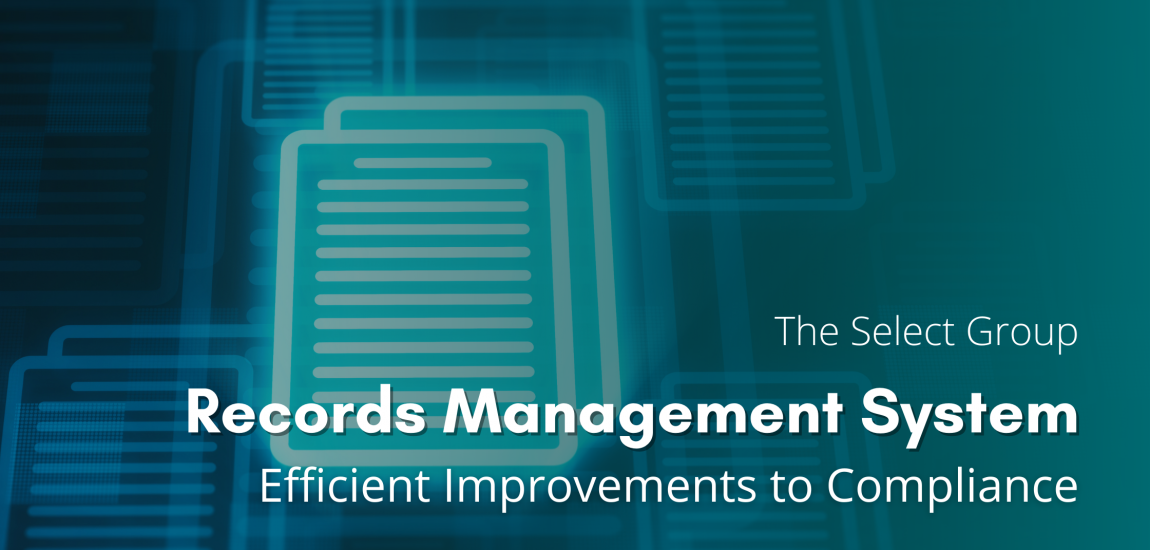Records Management System
Efficient Improvements to Compliance

A utility company’s ability to produce or process and distribute energy or clean drinking water to the market efficiently and profitably is no easy task. They must comply with privacy legislation, environmental and occupational health, and safety regulations. Given these requirements, a utility company faces more complex document retention issues than many other organizations.
Their documents’ longer and more extensive retention requirements require a substantial focus on Records Management Systems (RMS). The RMS includes the process and efficient control of the creation, maintenance, and storage of the records. Typically, an RMS is used throughout the record life cycle.
Types of Records
Most utility companies were established decades ago, which creates substantial difficulty managing records developed over many generations of technology. Control of these types of records or documents is a significant factor in compliance across most regulations in all utilities.
Right of Way is an agreement that grants a utility the right to use, access or transit a piece of property.
Easements are specified in a property deed, which is typically recorded at the county courthouse and designated for overhead electric and underground electric, water, sewer lines.
A Service Contract is an agreement between a government agency and a utility company to provide services.
Billing Records are records related to utility bill management. Any utility company must adhere to the Payment Card Industry Data Security Standard.
Maintenance Records are specific inspection and maintenance records that must be kept, in original form, for the life of the equipment or facility.
Engineering Documents are used to create construction plans that accommodate existing infrastructure, thereby reducing the overall risk of conflicts or damage.
Best Practices
Building around industry standards is one of the best ways for utility companies to ensure compliance with the law. Additionally, utility companies must limit workers’ access to only the applications and data required to perform their jobs.
Records Management Challenges
Decades of documents covering paper, microfiche, aperture cards, or other systems make it challenging to backfill old content into electronic systems without specific human intervention. An organization cannot simply upload terabytes of PDFs and make them searchable, so context must be developed for each document. A naming convention is needed to ensure documents or records are created in a way that can be searched and shared electronically.
Electronic records are less likely to be lost, damaged, or destroyed than a paper copy sitting in a file cabinet. However, securing electronic data is a more complex process. Guidelines address security, privacy, and compliance must be developed and implemented consistently.
Client Challenge: Transitioning from Hardcopy Documents
One of the biggest headaches for our clients is tracking hardcopy documents. For one of our clients, a large public utility company, it had become very cumbersome for employees to find documents. Under the original system, searching for a simple document could take hours, creating frustration and often resulting in lost documents. They have been leveraging internal resources to transition from hardcopy to an electronic records management system. However, the system was ineffective, not scaling, and needed process improvements to meet their expected business outcomes.
Our client communicated that the as-built upload process typically took six or more weeks, engineering records reviews would take 4-6 weeks, and the standards publishing process would take over four weeks. The client needed to significantly reduce these document turnaround times.
Project Engagement
TSG Managed Solutions
Our client looked for a partner that understood the complexities of managing and scaling records management systems. After spending time with the client’s team to understand their needs and craft a comprehensive solution, the TSG Managed Solutions Team took responsibility for the client’s RMS project.
Our planning process identified the different capabilities required to create a team:
- Records Coordinator Lead
- Records Coordinators
- Project Coordinator
Our rapid fulfillment of an entire team and deliverables-based approach allowed us to stay engaged at scale with a client. Our process begins with appointing a long-term engagement manager to be the single point of contact for our client, ensuring service-level agreements (SLAs), deliverables, and milestones are met. The engagement manager also identifies and manages the project’s scope as dictated in the SOW, including all financial performances like invoicing and budget tracking and service level agreements, in addition to team performance issues.
Records Management System Results
Increased Records Management Efficiency
The client’s decision to partner with The Select Group delivered the Records Management System with significant increases in efficiency. It allowed our client to meet their overall internal business objectives to improve their engineering team’s use of electronic records.
Benefits to the client included:
- 600% increase in efficiency for as-built upload of records.
- 300%+ increase in efficiency for records reviews.
- 400% increase in efficiency standards publishing process.
- Deduced time spent hiring and providing personnel oversight.
- Improved business agility for the client.
